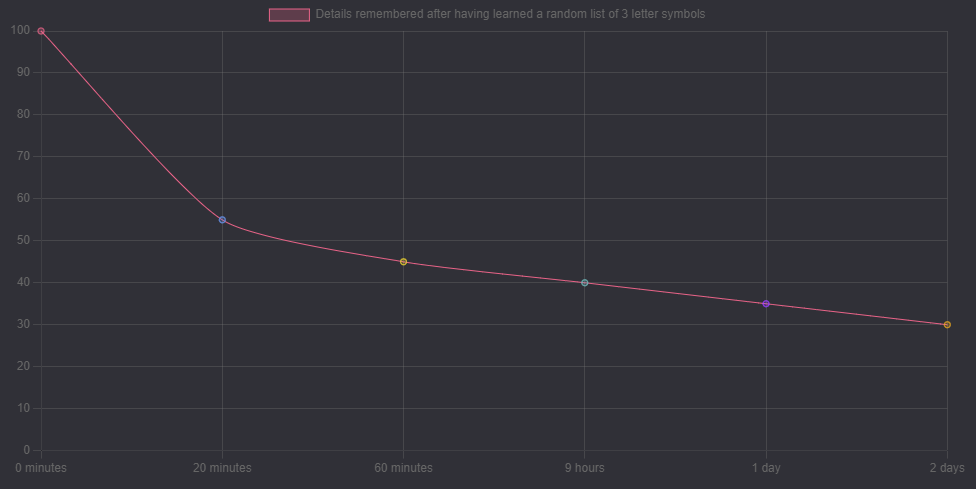Forgetting Curve
The “Forgetting Curve” is a theory by Hermann Ebbinghaus produced during his studies on our ability to learn. Here is a simple explanation of his findings:
- He first repeatedly read a random list of 3 letter symbols (for example ABC, BAC and so on) until he could recite them correctly (with no mistakes)
- 20 minutes later, he could correctly recite about 55% of the list
- 40 minutes after that, he could correctly recite about 45%
- After 9 hours, it was down to 40%
- After 24 hours, it was closer to 35%
- And after 48 hours, it was closer to 30%
See figure below for a graphical representation of how much he could remember correctly

Hermann Ebbinghaus chose to use lists of three random letter symbols as these would not be as easy to remember as actual words.
This is an important detail as it is easier to remember things that we can associate with existing knowledge, therefore such things would skew the results.
An important note is that the amount of details we forget will vary based on many circumstance, so these numbers are NOT an universal truth for all studies
But by monitoring how much a student forgets, based on things such as topic, time of day, day of the week, how long the student has been studying we might be able to identify a pattern for the unique student and thereby adapting the Spaced Repetition intervals to better suit their unique needs
# Sources
- Forgetting Curve - Wikipedia
- Replication and Analysis of Ebbinghaus’ Forgetting Curve
- A History of Modern Psychology - DUANE P. SCHULTZ, SYDNEY ELLEN SCHULTZ
- How to combat the Forgetting Curve - Growth Engineering